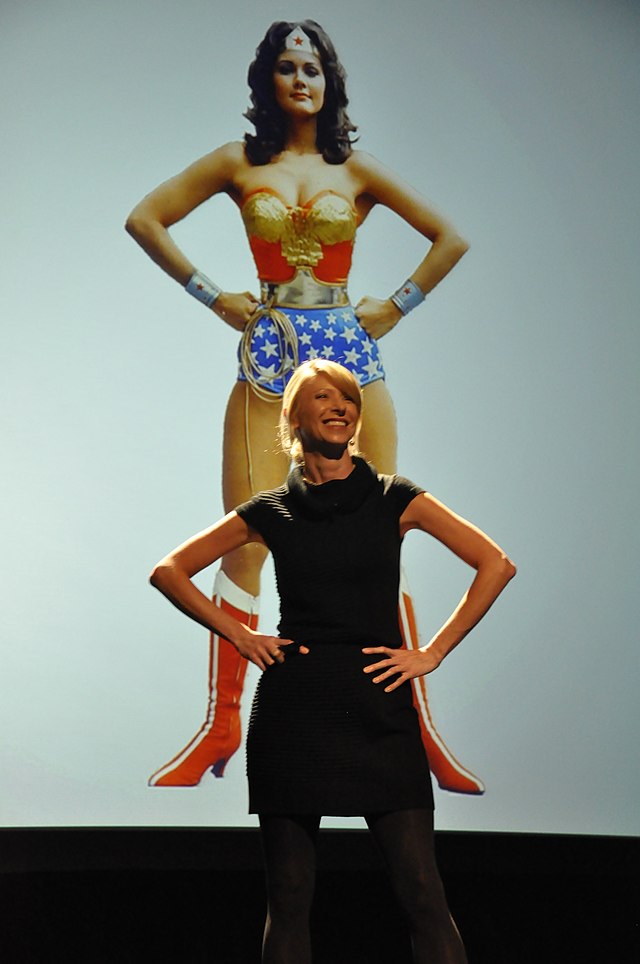How to Shift Your State at Will
Discover the Benefits of "Power Posing": Change Your Emotional State and Boost Confidence
Incorporating the "fake it until you make it" approach, power posing has been found to have measurable effects on hormones and stress levels. Recent research shows that both men and women can increase testosterone by 20% and decrease cortisol by 22% through this technique. Additionally, by using a simple mind trick, you can further alter your emotional state and improve your overall outlook.
Exercise

1. Begin with the wonder woman pose: stand tall and confidently, with your feet shoulder-width apart and your hands on your hips, like Wonder Woman. Hold this pose for two minutes while taking deep breaths. Research suggests that this can increase testosterone levels by 20% in both men and women, while decreasing cortisol (the stress hormone) by 22%.
2. Think of something you're proud of: Close your eyes and bring to mind a situation in your life that you're proud of. It can be something small, like helping a friend, or something big, like accomplishing a major goal. Focus on this memory and allow yourself to feel proud of what you've done, smile. Notice how you’re breathing when you’re feeling proud
Say "Yes" out loud: While still in your power pose, say "Yes" again and raise your hand to reinforce your positive feelings. This can help anchor the emotions and memories of your proud moment, and help you stay in a positive state of mind.
3. Think of something you're excited about: Close your eyes and bring to mind a situation in your life that you're excited about. It could be a future event or a project you're working on. Focus on this exciting prospect and feel the positive emotions that come with it. Make the sound of excitement, like "Woo-hoo!" or "Yay!" Do this again twice and notice how your breathing changes with each sound.
By practicing this 1-2-3-exercise regularly, you can train your mind to focus on positive experiences and emotions, which can help you stay motivated and confident in all areas of your life.
Case study:
Sarah, a competitive long-distance runner, had been feeling burnt out and demotivated lately. She had been training for months and felt like she had hit a wall. She was struggling to find the energy and motivation to keep going, and was worried that her performance would suffer as a result. She came to see me for help.
I recommended that Sarah try a combination of the power pose exercise and the 1-2-3 exercise to help her recharge her energy and motivation. I explained that the power pose exercise could help her increase her testosterone levels, which could in turn boost her energy and motivation, while also reducing her cortisol levels to help her manage her stress levels. The 1-2-3 exercise could help her shift her focus to more positive thoughts and feelings, reinforcing her motivation and sense of purpose.
Sarah began incorporating both exercises into her daily routine. She would start by standing in the wonder woman pose for two minutes each morning, taking deep breaths and visualizing herself feeling energized and motivated. She would then move on to the 1-2-3 exercise,
Over time, Sarah noticed a significant improvement in her energy levels and motivation. She felt more confident and energized during her training sessions, and was able to push herself harder as a result. She also felt calmer and more centered in her personal life, and was able to manage stress and burnout more effectively.
Sarah continued to practice both exercises regularly, both before training sessions and in her daily life, and found that they helped her maintain her energy and motivation levels over time. She also shared the techniques with her fellow runners, who also found them helpful for managing stress and increasing their motivation.
In conclusion, the power pose exercise and the 1-2-3 exercise can be helpful tools for athletes like Sarah who are struggling with burnout and demotivation. By increasing energy and motivation while reducing stress, these exercises can help athletes overcome mental and physical barriers to achieve their goals.
